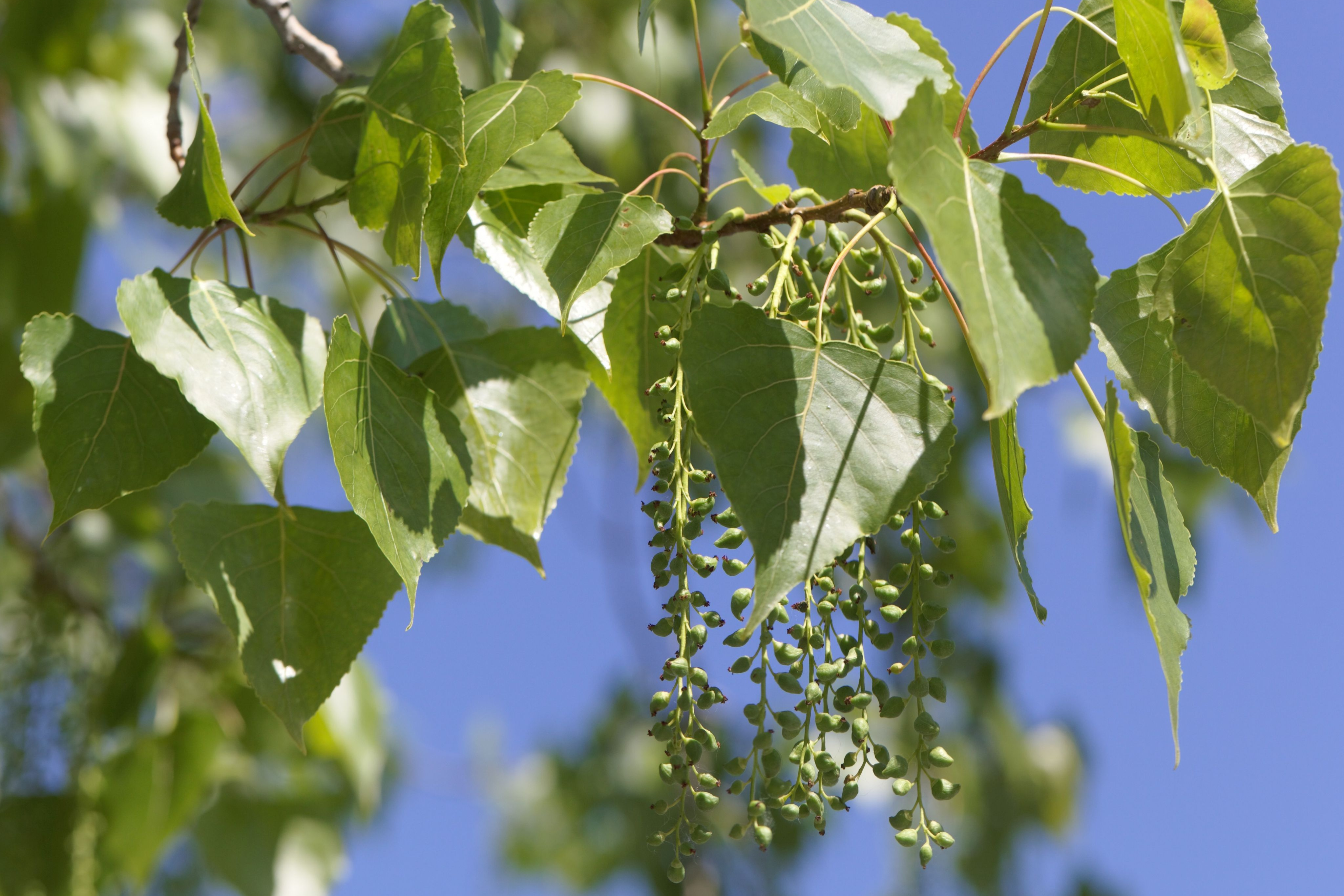Eastern cottonwood
(Populus deltoides)

Description
Populus deltoides, commonly known as Eastern Cottonwood, is a large, fast-growing deciduous tree that belongs to the genus Populus and the family Salicaceae. This species is native to North America and can be found in wetland areas, riparian forests, and along riverbanks from the Gulf of Mexico to southern Canada. The tree is also widely cultivated for its timber and for its ornamental value. Description Populus deltoides is a large tree that can grow up to 30-50 meters tall and can have a trunk diameter of up to 2-3 meters. The bark of the tree is grayish-brown and deeply furrowed, which provides protection against wildfire and insect damage. The leaves of the Eastern Cottonwood are large, triangular, and have a pointed tip. They are dark green on the top surface and light green on the underside. The leaves can grow up to 20 cm long and 15 cm wide, and they are borne alternately on the branches. The tree is dioecious, which means that male and female flowers are borne on separate trees. The male flowers are yellow-green and cylindrical, while the female flowers are greenish and spherical. Distribution The Eastern Cottonwood is native to North America and can be found throughout the eastern and central parts of the continent. Its range extends from the Gulf of Mexico to southern Canada and from the Atlantic coast to the eastern slopes of the Rocky Mountains. The tree prefers wet soils and is commonly found in riparian forests, along riverbanks, and in floodplains. It can also tolerate periodic flooding. Ecological Importance The Eastern Cottonwood is an important species in riparian ecosystems because it provides food, shelter, and nesting sites for a variety of wildlife. The tree's large size and rapid growth make it an excellent source of habitat for many species. The tree's leaves are a source of food for the caterpillars of several butterfly species, including the Eastern Tiger Swallowtail and the Viceroy. The tree's seeds and buds are eaten by birds, and its bark is used by beavers for building dams and lodges. The tree also helps to stabilize riverbanks and prevent soil erosion. Cultivation Populus deltoides is widely cultivated for its timber and ornamental value. The tree is fast-growing and can be used for reforestation and erosion control. The wood of the Eastern Cottonwood is light in color and relatively soft, which makes it easy to work with. It is used for plywood, pallets, crates, and other products that require lightweight, low-density wood. The tree is also popular as an ornamental tree because of its large size and attractive foliage. It is often planted along streets and in parks and other public areas. Propagation The Eastern Cottonwood can be propagated by seeds or cuttings. Seeds are collected in the fall and should be stratified in the refrigerator for several weeks before planting. Cuttings should be taken from young trees in the early spring and treated with rooting hormone before planting. Pests and Diseases The Eastern Cottonwood is susceptible to a variety of pests and diseases. The most common diseases affecting the tree are cankers, leaf spots, and rusts. The most common pests are aphids, scales, and borers. Control measures for these pests and diseases include pruning infected branches, using insecticidal soaps or oils, and applying fungicides. Conclusion Populus deltoides, the Eastern Cottonwood, is a large, fast-growing tree that is native to North America. It is an important species in riparian ecosystems and is widely cultivated for its timber and ornamental value. The tree is easy to propagate and provides habitat for many species of wildlife.
Taxonomic tree:







